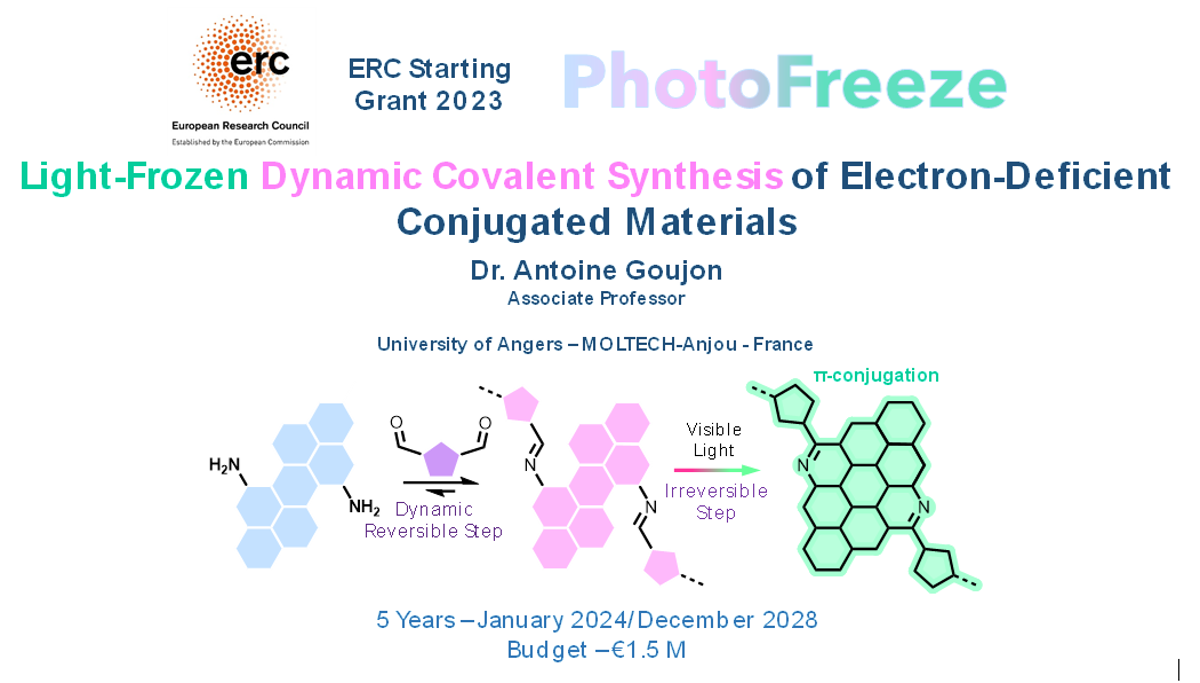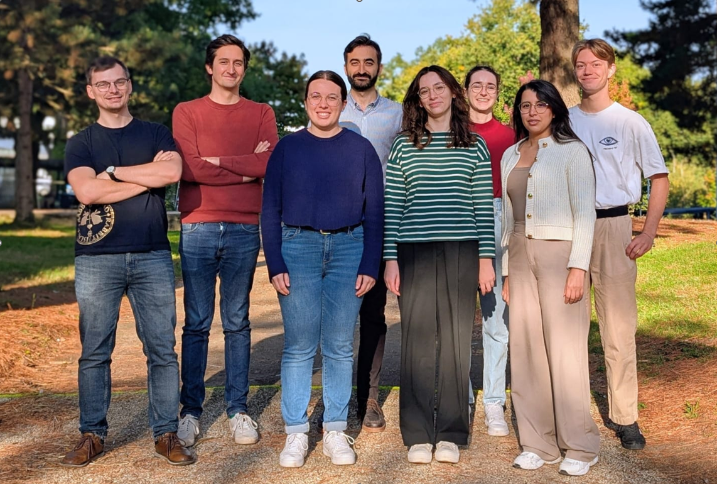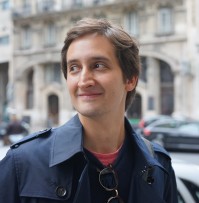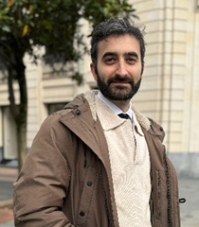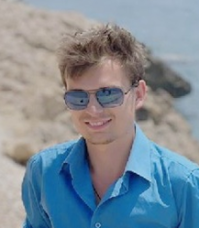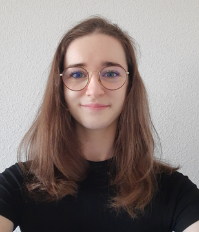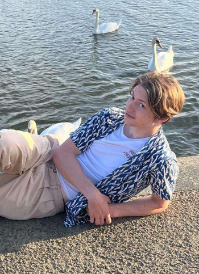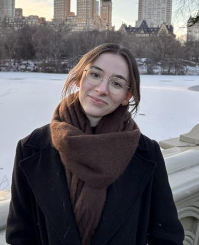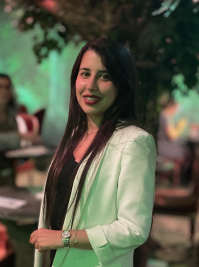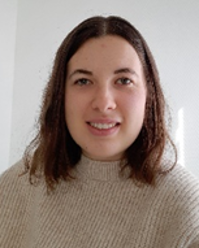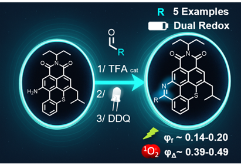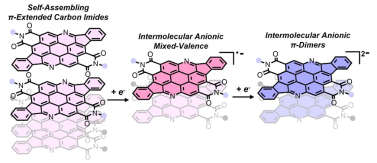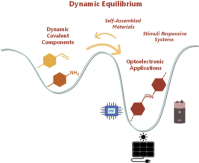- Index
- >Research
- >Team PulSAr
- >ERC - PhotoFreeze
ERC - PhotoFreeze
ERC - PhotoFreeze
PhotoFreeze is a project funded by an ERC Starting Grant granted in 2023 by the European Research Council (Grant N° 101116355). PhotoFreeze is led by Dr. Antoine Goujon and aims at combining the dynamicity and synthetic advantages of dynamic covalent bonds with the robustness and performances of conjugated materials to discover new n-type organic semiconductors. The key of PhotoFreeze is the development of a light-frozen dynamic covalent synthetic methodology that can be applied to a wide variety of π-extended 1/2/3D structures.
The Team
|
Dr. Antoine Goujon – Principal Investigator | |
|
Antoine Goujon received his PhD in organic chemistry in 2016 from the University of Strasbourg (France) under the supervision of Prof. Nicolas Giuseppone. His thesis was focussed on the macroscopic amplification of collective motions of nanoscopic molecular machines. In 2017 he joined the group of Prof. Stefan Matile in Geneva (Switzerland) where he worked on the development of mechanosensitive fluorescent probes for cell membrane tension sensing and imaging. This work has led to the co-invention of three organelle-selective probes now commercially available. He was appointed Maître de Conferences (Associate Professor) in 2019 at the University of Angers in the MOLTECH-Anjou laboratory (PulSAr Team) to develop new n-type organic semiconductors. He was distinguished as “Rising Star” by the Région Pays-de-la-Loire in 2021 and was awarded an ANR (Agence Nationale de la Recherche) JCJC funding the same year. He was awarded the Marc Julia “Emergent Scientist” 2023 price from the Organic Chemistry Division of the French Chemical Society. Antoine now develops dynamic light-driven synthetic methodologies to control the growth of semiconducting conjugated polymers and n-type nanographenes and nanoribbons. |
|
|
Miguel Ángel Medel Miranda (Postdoctoral Researcher) | |
|
Miguel Ángel Medel Miranda obtained his PhD from the University of Granada (Spain) in 2022 under the supervision of Prof. Araceli G. Campaña and Dr. Sara P. Morcillo. His doctoral research focused on the synthesis of distorted nanographenes that combine non-hexagonal rings and helicenes to investigate their chiroptical properties. He then joined the group of Prof. Aurelio Mateo Alonso at POLYMAT (San Sebastián, Spain) as a postdoctoral researcher, where he worked for two years developing nanoribbons and studying their photophysical properties. Miguel Ángel is currently a postdoctoral researcher in the PulSar group, working with Dr. Antoine Goujon on the synthesis of carbon imides bearing distorted-ring-embedded helicene for chiral electronics (IBERIAN). |
|
|
Benjamin Mourot (Postdoctoral Researcher) | |
|
Benjamin Mourot studied chemistry and molecular physico-chemistry at the University of Lorraine in Nancy, France. In 2024, he completed his PhD at Aix-Marseille University under the supervision of Dr. S. Pascal and Dr. O. Siri, focusing on the development of coupled polymethine systems and their electronic properties. In April 2024, he joined Prof. H. Yamada’s team at Kyoto University as a postdoctoral researcher, where he prepared and investigated the optical and redox properties of several azaacene-fused (hetero)porphyrins. Benjamin is currently a postdoctoral researcher within the PulSAr group, as part of the PhotoFreeze project, with Dr. A. Goujon, developing and studying modified extended perylene diimides and related polymers. |
|
|
Fanny Guicheteau (PhD Student) | |
|
Fanny obtained her DUT in analytical and synthetic chemistry, her Bachelor's degree and her Master's degree in Molecular Chemistry at the University of Rennes (France) in 2024. She made her last internship to validate her Master's degree in the Organometallics Materials and Catalysis (OMC) and the Organic Chemistry and Interfaces (CORINT) teams, between the Rennes Institute of Chemical Sciences and the Rennes School of Chemistry (ENSCR), where she did the multi-step synthesis of complexes with surprising optoelectrochemical properties, under the supervision of Yann TROLEZ and Julien BOIXEL. Then she moved in Moltech Anjou to start her PhD, where she works on the multi-step synthesis and characterization of the optoelectronical properties of electron-deficient conjugated materials under the supervision of Antoine GOUJON. |
|
|
Lucas Loriot (PhD Student) | |
|
Lucas Loriot is a PhD student under the supervision of Dr. Antoine Goujon. Born in Annecy (2002), he moved to the west part of France in order to study chemistry at the University of Tours, where he obtained his bachelor’s degree in the discipline. He then entered the LUMOMAT master in September 2023 and was successfully diplomed in July 2025. During his master’s degree, he did a first internship on the synthesis and characterization of oxime-based semiconductors under the supervision of Prof. Peter J. Skabara, at the University of Glasgow (Scotland), and a second one on the synthesis of confined perylene diimide-based macromolecules and characterization of their mixed-valence properties upon reduction, under the supervision of Dr. Antoine Goujon at MOLTECH-Anjou (France). He is currently working the synthesis of dynamic covalent materials and characterisation of their optoelectronic properties. |
|
|
Eléna Picourlat (PhD Student) | |
|
Eléna has been a PhD student at the University of Angers in the PulSar team since October 2025. She obtained her bachelor’s degree in Advanced Chemistry in 2023 from the University of Nantes. In the same year, she transferred into the LUMOMAT master’s program, completing her first year at the University of Nantes and her second year at the University of Angers. During the first year, she worked on modifying designed proteins (a3C and a4C) for singlet fission applications, under the supervision of Starla Glover and Victor Gray at the Ångström Laboratory (University of Uppsala). In the second year, she focused on synthesizing and characterizing new phthalocyanine-based organic semiconductors for transistor applications at the University of Ottawa, under the supervision of Jacklyn Brunson and Benoit Lessard. Eléna decided to join the project in October 2025, focusing on light-frozen dynamic covalent synthesis of electron-deficient conjugated materials. She is currently working on the synthesis of PDI cyclophane structures. |
|
|
Oumaima Abidi (Temp. Assistant Professor) | |
|
Oumaima ABIDI obtained her Ph.D. from the university of Burgundy in 2023 under the supervision of Prof. Jean-Cyrille HIERSO AND Dr. Julien ROGER. Her doctoral research focused on transition-metal-catalyzed ortho-directed C–H bond activation and functionalization (Pd, Ru, Ir and Rh), as well as the mechanistic understanding of these transformations. She then joined the Redox Inorganic Chemistry (CIRe) group at the department of Molecular Chemistry, Université Grenoble Alpes, in collaboration with the LEPMI laboratory, working with Dr. Nicolas LECONTE on the multi-step organic synthesis of redox-active ligands and their complexation with earth-abundant metals for battery applications. Oumaima ABDI is currently a temporary assistant professor involved in the photofreeze project, working with Dr. Antoine GOUJON on the synthesis of perylenediimides. |
|
|
Clara Pasgrimaud (Engineer Assitant) | |
|
Clara obtained a DUT in Chemistry in Rennes in 2020 then a professional Bachelor in Fine and Synthetic Chemistry in Le Mans in 2021. Clara made simultaneously worked in the MOLTECH-Anjou laboratory where she developed the synthesis of helicenic derivates (CIMI Team) and of thiophene derivatives (SCL Team). Then, she worked for one year as a technician on Antibody Drug Conjugates at the University of Tours. She followed-up as a technician for 6 months on the synthesis of perfumed molecules from terpenes at Demeta (Rennes). Subsequently, she worked for 9 months as a production technician on Antibody Drug Conjugates at Axplora (Le Mans). She’s currently an assistant engineer working with Antoine Goujon. |
|
Publications
Exploring the Azabenzannulation on Benzothioxanthene Imide.
David A. H. G., Puchán Sánchez D., Kassem A., Roger M., Allain M., Le Bahers T., Monnereau C., Goujon A., Cabanetos C., J. Org. Chem., 2025, https://doi.org/10.1021/acs.joc.5c01303.
Synthesis of Electron-Deficient BisAzaCoroneneDiimide-Conjugated Polymers by Light-Locking Dynamic Covalent Bonds.
Gapin A., Chatir E., Alévêque O., Pasgrimaud C., David A. H. G., De Maria A., Legros M., Le Bras L., Levillain E., Goujon A. J. Am. Chem. Soc, 2025, https://doi.org/10.1021/jacs.5c01351

Intermolecular Anionic Mixed-Valence and π-Dimer Complexes of Ortho-Pentannulated BisAzaCoroneneDiimides.
David A. H. G., Roger M., Alévêque O., Melnychenko H., Le Bras L., Allain M., Adèle Gapin, Canevet D., Ségut O., Levillain E., Goujon A., Angew. Chem. Int. Ed., 2024, https://doi.org/10.1002/anie.202413616
Dynamic Covalent Synthesis Applied to Optoelectronic and Energy Materials: Design, Applications and Limitations.
Chatir E., David A. H. G., Gapin A., Goujon A., Eur. J. Org. Chem. 2024, https://doi.org/10.1002/ejoc.202400211
Contact
Dr. Antoine Goujon – Maître de Conférences (Associate Professor)
antoine.goujon@univ-angers.fr
+33 (0)2 41 73 50 99
Twitter/X : @antoinegoujon1
Google Scholar
LinkedIn
PulSAr Team


